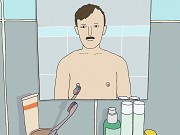Authors
Karlis Verdins1; Jānis Ozoliņš1; 1 Art Academy of Latvia, LatviaDiscussion
From 1945 to 1991, when Latvia was part of the USSR, the Communist Party held sway over politics, public life, and art. Artists were under pressure to produce realistic, life-affirming art that celebrated the achievements of the Soviet workers and set a positive example for the masses. Initially, the artists of Soviet Latvia responded to these demands by adapting to the requirements of socialist realism. Later, in the 1960s, they created the so-called "severe style," combining realism with modernist influences. Works of this style often depicted tough, robust working-class men going about their duties in a factory, collective farm, or a fishing boat. The group of five collective farmers shown in the composition Masters of the Land (1960) by painter Edgars Iltners (1925–1983) became the standard of this style. In the next two decades, Iltners also painted groups of workers, allowing more and more deviations from socialist realism in this subject. In some works from the 1960s, he depicts groups of robust male workers at work and leisure, sometimes half-dressed, underscoring the affective strength and importance of their homosocial bonds. Masculine bonds are also significant in historical paintings of the First World War, especially in the image of a dead or wounded soldier who his comrades carry. In the 1970s, men's figures became slimmer and less robust, and their postures became more relaxed, sometimes even flamboyant. Male figures were often depicted together with machines and technology, thus emphasizing the technical progress that allows for the reduction of the importance of physical strength in various jobs. Such art was created in conditions where free conversations about the diversity of sexuality were impossible, and the art consumer was imagined as a sexually uneducated, innocent observer whose depiction of male athletic bodies would only encourage them to increase labor productivity and feel pride in the industrialization of the USSR. One of Iltner's most important themes is masculinity and technology: in his paintings, the power of industrialization replaces the physical strength of the Soviet man, making his figure more androgynous. Our research draws from Tim Pursell's analysis of the sexual ambivalence of the hypermasculine art of totalitarianism, Zdravomyslova's and Temkina's analysis of Soviet discourse on masculinities and Marko Dumančič's exploration of the Soviet masculinity crisis in the long 1960s. As we argue, changes in the understanding of masculinity in the 1960s throughout the USSR were also reflected in the art of occupied Latvia, where artists created their male images without knowledge of the homoerotic tradition in art history and Western erotic art. The modern viewer also reads the homoerotic element in this art even though Iltners and other artists of his generation most likely were not aware of its presence. 

